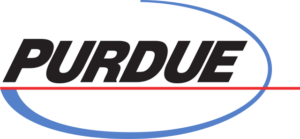On June 27, 2024, the US Supreme Court issued a critical decision blocking Purdue Pharma’s controversial bankruptcy plan, which aimed to shield the Sackler family from civil liability related to the opioid crisis. This decision, stemming from the case Harrington v. Purdue Pharma L.P., represents a significant moment in bankruptcy law and the ongoing battle against the opioid epidemic.
The Controversy Over Third-Party Releases
Purdue Pharma, owned by the Sackler family, has been at the center of the opioid crisis that has devastated countless lives across America. The company faced thousands of lawsuits alleging that it aggressively marketed OxyContin while downplaying its addiction risks, contributing to the opioid epidemic. In response, Purdue Pharma filed for bankruptcy in 2019, proposing a reorganization plan to settle the claims against it. The proposed bankruptcy plan included a contentious provision that would release the Sackler family from any future civil claims without requiring them to file for bankruptcy themselves or relinquish a significant portion of their fortune.
The crux of the Supreme Court case revolved around whether the Bankruptcy Code permits a court to approve a reorganization plan that includes such broad third-party releases. The US Trustee and various creditors argued that allowing these releases would set a dangerous precedent, effectively enabling wealthy individuals to misuse the bankruptcy system to escape liability.

Supreme Court’s Decision and Its Implications
The Supreme Court, in a majority decision, agreed with the arguments presented by the US Trustee and other opponents of the plan. The Court emphasized that the Bankruptcy Code does not explicitly authorize non-consensual third-party releases except in cases involving asbestos claims. By blocking the plan, the Court underscored the principle that bankruptcy should not be used as a shield for non-debtors to avoid litigation without proper consent from the affected parties.
This decision has far-reaching implications. It not only impacts the resolution of the Purdue Pharma bankruptcy but also sends a clear message about the limits of bankruptcy protections. It already caused a Connecticut Roman Catholic Diocese to change their treatment of compensation for abuse victims in its proposed Chapter 11 plan. For victims of the opioid crisis and other mass torts, this ruling is a step towards ensuring that those responsible for widespread harm cannot easily escape accountability through legal maneuvers.

Reactions and Future Steps
The decision was met with mixed reactions. Advocates for opioid victims hailed it as a victory for justice, emphasizing that it would ensure the Sackler family faces consequences for their role in the opioid epidemic. On the other hand, Purdue Pharma and its supporters argued that without the releases, the structured settlement plan might collapse, potentially reducing the funds available for compensating victims.
Moving forward, the bankruptcy court will need to revisit the reorganization plan, potentially renegotiating terms that do not include the third-party releases. This process may delay the distribution of settlement funds but ensures a more equitable approach to addressing the claims against Purdue Pharma and the Sacklers.
Conclusion
The Supreme Court’s decision in the Purdue Pharma bankruptcy case marks a significant development in both bankruptcy law and the fight against the opioid crisis. By blocking the controversial third-party releases, the Court has reinforced the importance of accountability and the proper use of bankruptcy protections. As this case continues to unfold, it will undoubtedly shape the landscape of mass tort litigation and corporate accountability in the years to come.
If you would like to talk to an attorney, contact Attorney Evelyn J. Pabon Figueroa at (407) 647-7887 or epabonfigueroa@pcc.law.
